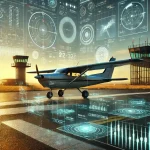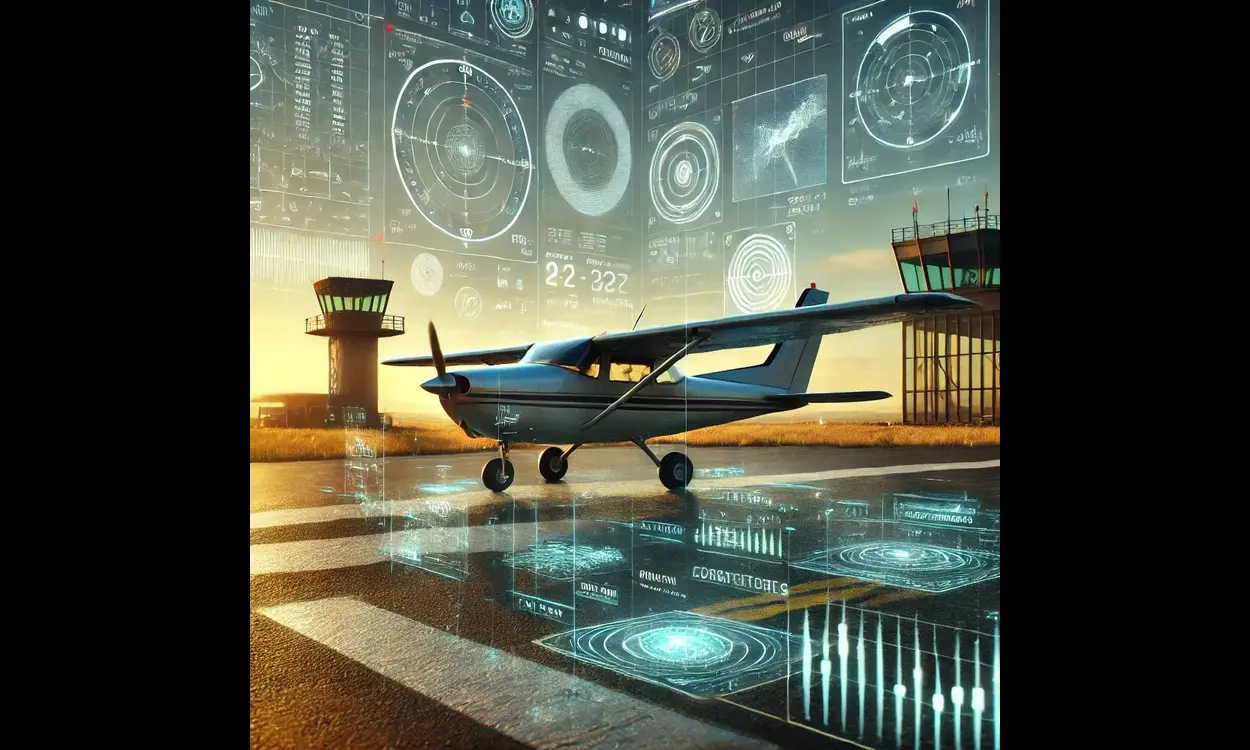CFBWH (carbon fiber reinforced wing hinge) technology. This breakthrough promises to unleash new levels of efficiency, performance, and sustainability for aircraft. Whether you are a seasoned aviation enthusiast or someone who keeps an eye on cutting-edge technology, this blog post will explore how CFBWH technology is transforming the aviation landscape.
Table of Contents
- Understanding CFBWH Technology
- Carbon Fiber Strength
- How CFBWH Technology Improves Aerodynamics
- Impact on Fuel Efficiency
- Pioneers of CFBWH Technology
- Challenges and Considerations
- Sustainability and Environmental Benefits
- The Future of Aviation with CFBWH Technology
- Overcoming Barriers to Adoption
- Case Studies of CFBWH Technology in Action
- CFBWH Technology and the Experience of Air Travel
- The Role of CFBWH Technology in the Design of Future Aircraft
- Conclusion
Understanding CFBWH Technology
This technology is a marvel of modern engineering. It involves the use of carbon fiber wing struts and hinges to improve aircraft aerodynamics. This lightweight yet incredibly strong material allows wing designs to be more flexible, reducing drag and improving fuel efficiency. The potential of this technology is not just theoretical. Many experts believe it represents the next leap in sustainable aviation.
The application of this technology is particularly interesting in the world of aviation. By reducing the weight of aircraft without compromising strength, airlines can achieve greater fuel efficiency. This not only reduces operating costs but also cuts emissions, in line with global sustainability goals. The resulting aircraft are faster, quieter and more efficient.
Aircraft manufacturers are already exploring the possibilities of this technology. Companies such as Boeing and Airbus have begun incorporating carbon fibre components into their designs. While full adoption is still a few years away, the foundations are being laid for a more efficient future in aviation.
Carbon fibre strength
Carbon fibre is the star of this technology. Its construction allows for a unique combination of strength and lightness. Unlike traditional materials such as aluminium, carbon fibre can be formed into complex shapes, offering more aerodynamic possibilities. This flexibility is essential for creating innovative wing designs that reduce drag.
The advantages of carbon fibre go beyond its physical properties. Its resistance to wear and corrosion results in a longer life for aircraft components. This means less frequent maintenance and a lower risk of mechanical failure, contributing to safer travel and lower costs in the long run.
Because of its potential, carbon fiber has become a preferred material in various industries. From sports cars to wind turbines, its application is wide and influential. In aviation, its role in this technology could pave the way for radical design changes that improve the performance and sustainability of future aircraft.
How CFBWH Improves Aerodynamics
Aerodynamics are key to efficient flight, and CFBWH technology is designed to improve this aspect. By using carbon fiber struts and hinges, engineers can create wing designs that flex and adjust in flight. This adaptability reduces air resistance, allowing aircraft to glide more smoothly through the sky.
The improved aerodynamics of CFBWH-equipped aircraft translate into significant fuel savings. With reduced drag, engines do not need to work as hard, which reduces fuel consumption. This efficiency is critical in an industry where fuel costs account for a large portion of operating expenses.
In addition to saving fuel, better aerodynamics can lead to quieter rides. By reducing turbulence and noise, passengers enjoy a more comfortable ride. This aspect of CFBWH technology improves the overall flight experience and sets new standards for passenger satisfaction.
Impact on fuel efficiency
Fuel efficiency is a critical factor for airlines and CFBWH technology is expected to provide significant improvements. By reducing aircraft weight and improving wing design, aircraft can achieve greater fuel efficiency. This translates into lower emissions and cost savings for airlines, making flying more environmentally friendly and affordable.
The aviation industry has long been under scrutiny for its environmental impact. With CFBWH technology, airlines have a powerful tool to reduce their carbon footprint. Greater fuel efficiency means lower greenhouse gas emissions, contributing to a more sustainable future for air travel.
The economic benefits of increased fuel efficiency are significant. Airlines can pass on cost savings to consumers, making air travel more convenient. This potential to reduce ticket prices, combined with environmental benefits, puts CFBWH technology in a win-win situation for the industry and passengers.
Pioneers in CFBWH Technology
Several major players in the aerospace industry are leading the development of CFBWH technology. Boeing and Airbus, two of the largest aircraft manufacturers, are at the forefront of these advances. Their efforts to incorporate carbon fiber components into new models demonstrate the potential of this technology.
These companies invest heavily in research and development to improve CFBWH applications. By collaborating with leading materials scientists and engineers, they push the boundaries of what is possible in aircraft design. Their work is paving the way for a new era of aviation where sustainability and performance go hand in hand.
Startups and small businesses are also contributing to the growth of CFBWH technology. These innovators bring new perspectives and flexible methodologies to problem solving. Their contributions are vital to accelerating the implementation of carbon fiber solutions across the aviation industry.
Challenges and Considerations
While CFBWH technology is tremendously promising, there are challenges that need to be addressed. The cost of producing carbon fiber remains high, presenting a barrier to its widespread adoption. However, as demand increases and manufacturing processes improve, costs are expected to decrease.
Safety is another critical consideration. Ensuring that carbon fiber components meet strict safety standards is essential. Industry regulators work closely with manufacturers to establish guidelines that maintain safety without stifling innovation.
Despite these challenges, the overall outlook for CFBWH technology is positive. Continued investment in research and development will address these obstacles, unlocking the full potential of carbon fiber in the aerospace sector.
Sustainability and Environmental Benefits
CFBWH technology aligns with the aviation industry’s sustainability goals. By reducing fuel consumption and emissions, they support efforts to combat climate change. This commitment to sustainability is critical to the long-term survival of the industry.
The environmental benefits of reducing emissions are significant. Reducing greenhouse gas production helps mitigate the aviation sector’s impact on global warming. This shift toward green aviation is essential as international regulations become increasingly stringent.
In addition to environmental benefits, sustainability efforts enhance a brand’s reputation. Airlines that adopt CFBWH technology can position themselves as leaders in green travel and attract environmentally conscious consumers.
The Future of Aviation with CFBWH Technology
The future of aviation is bright with CFBWH technology. As research and development progresses, we can expect to see more innovative applications for carbon fiber. These developments will continue to improve aircraft performance, efficiency, and sustainability.
The incorporation of CFBWH technology could lead to entirely new aircraft designs. We may see aircraft with unconventional shapes and features that maximize aerodynamic efficiency. These futuristic designs will redefine air travel, making it more efficient and enjoyable.
The benefits of CFBWH technology extend beyond commercial aviation. Military and private aircraft can also benefit from these advancements to improve performance and reduce operating costs. This diversity underscores the broad impact carbon fiber has had on the aviation industry.
Overcoming Barriers to Adoption
While the potential of CFBWH technology is clear, barriers to adoption remain. The high initial investment in carbon fiber components is a major hurdle for many aerospace companies. However, as the technology advances, production costs are expected to decline.
Another hurdle is the need for industry-wide collaboration. Manufacturers, regulators, and airlines must work together to establish standards and best practices for the use of carbon fiber in aviation. This collaboration will ensure the safe and efficient integration of new technologies.
Overcoming these barriers will require continued investment in research and development. By prioritizing innovation and collaboration, the aviation industry can unleash the full potential of CFBWH technology.
Case Studies on the Use of Carbon Fiber in Aircraft
To better understand the impact of CFBWH technology, let’s explore some real-world examples. The Boeing 787 Dreamliner is a prime example of the use of carbon fiber in aviation. Its lightweight design reduces fuel consumption and improves passenger comfort.
Airbus has also adopted carbon fiber technology in the A350. The aircraft features carbon fiber-reinforced polymer components, which reduces weight and improves efficiency. This commitment to innovation demonstrates the potential of CFBWH technology in modern aviation.
These case studies highlight the tangible benefits of CFBWH technology. By reducing weight and improving performance, carbon fiber is transforming the aviation landscape.
CFBWH Technology and the Air Travel Experience
One of the most exciting aspects of CFBWH technology is its impact on the air travel experience. With improved aerodynamics and fuel efficiency, journeys become smoother and quieter. Passengers enjoy a more comfortable and enjoyable journey.
The reduced weight of carbon fiber components allows for a larger cabin and more amenities. This means more room for passengers to relax and enjoy their journey. Airlines can offer enhanced services and features, elevating the overall travel experience.
The benefits of CFBWH technology go beyond passenger comfort. Airlines can achieve greater operational efficiency, reduce delays, and improve punctuality. This commitment to excellence enhances the reputation of airlines and elevates the travel experience.
The role of CFBWH technology in the design of future aircraft
The incorporation of CFBWH technology will revolutionize aircraft design. By allowing for more flexible and aerodynamic structures, engineers can create faster, more efficient, and more sustainable aircraft. This innovation paves the way for the next generation of aviation.
Future aircraft designs may feature unconventional shapes and configurations that maximize the benefits of carbon fiber. These innovations will improve fuel efficiency and performance, setting new standards for the industry.
The role of CFBWH technology in aircraft design extends beyond commercial aviation. Military and private aircraft can also benefit from these advancements to improve performance and reduce costs. This diversity underscores the broad impact carbon fiber has on the industry.
Conclusion
CFBWH technology is set to transform the aviation industry. By harnessing the power of carbon fiber, this innovation promises to deliver significant improvements in efficiency, performance, and sustainability. The benefits of CFBWH technology are clear and its adoption will shape the future of aviation.
For airlines and manufacturers, investing in CFBWH technology is a strategic move that aligns with sustainability goals and improves competitiveness. By overcoming challenges and fostering collaboration, the industry can unleash the full potential of this innovative technology.
The future of aviation is bright with CFBWH technology and its impact will be felt across the industry. From improved passenger experiences to increased operational efficiency, the benefits are far-reaching. The aviation industry is on the cusp of a new era, where innovation and sustainability go hand in hand.









